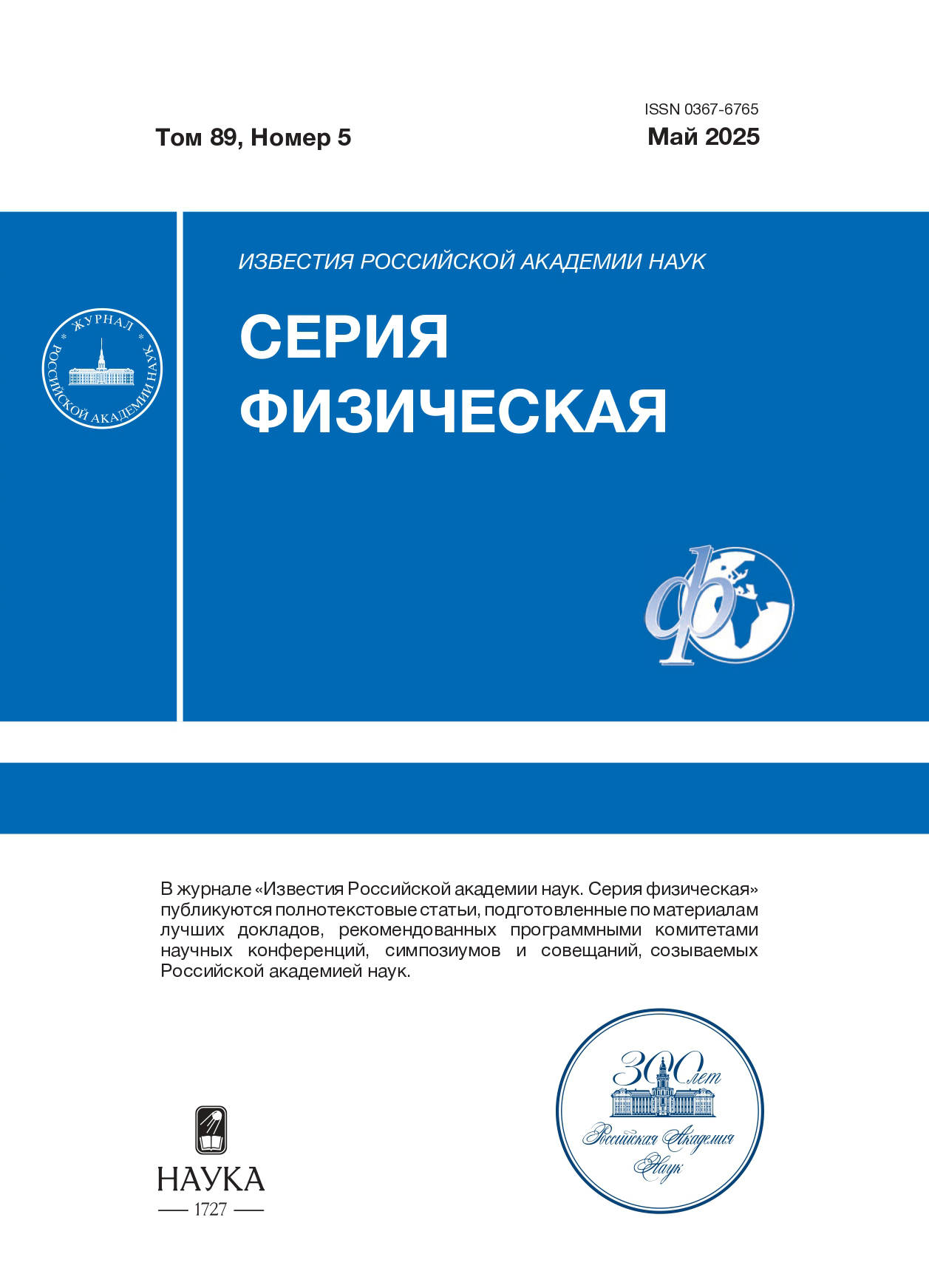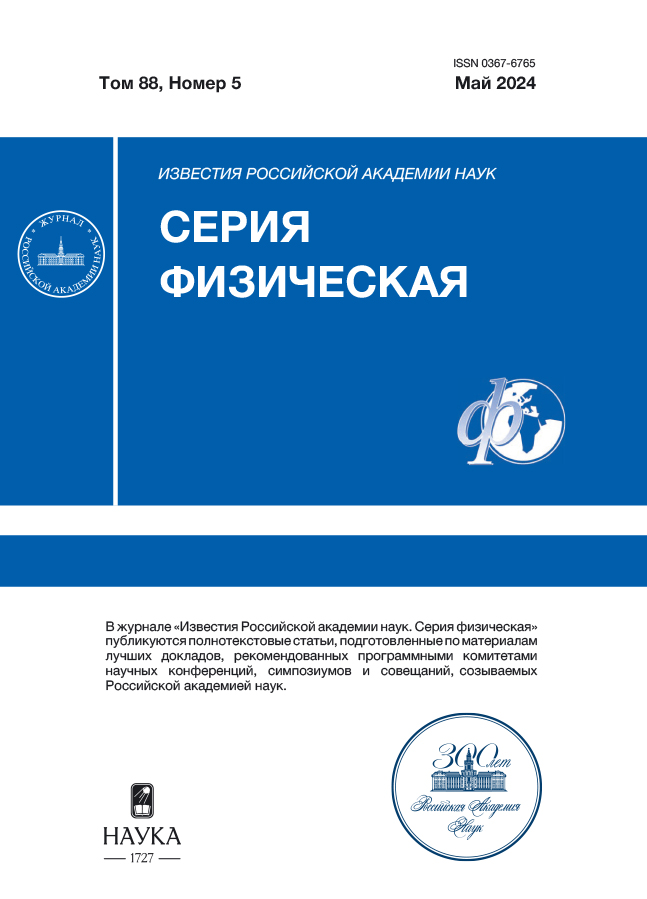Influence of magnetic field on electric polarization in small magnetic particles
- Authors: Shaposhnikova T.S.1, Mamin R.F.1
-
Affiliations:
- Federal Research Centre Kazan Scientific Centre of the Russian Academy of Sciences
- Issue: Vol 88, No 5 (2024)
- Pages: 817-822
- Section: Physics of ferroelectrics
- URL: https://clinpractice.ru/0367-6765/article/view/654691
- DOI: https://doi.org/10.31857/S0367676524050209
- EDN: https://elibrary.ru/QDQVER
- ID: 654691
Cite item
Abstract
Within the framework of the phenomenological approach, we have obtained an inhomogeneous electric polarization associated with the appearance of an inhomogeneous magnetization distribution in the volume of small magnetic particles near the second-order phase transition from paramagnetic to ferromagnetic state. The temperature area of the existence of such inhomogeneous states for spherical shape particles of different sizes is determined. The change in the local electric polarization of small magnetic particles in an external magnetic field is considered.
Full Text
About the authors
T. S. Shaposhnikova
Federal Research Centre Kazan Scientific Centre of the Russian Academy of Sciences
Author for correspondence.
Email: t_shap@kfti.knc.ru
Zavoisky Physical-Technical Institute
Russian Federation, KazanR. F. Mamin
Federal Research Centre Kazan Scientific Centre of the Russian Academy of Sciences
Email: t_shap@kfti.knc.ru
Zavoisky Physical-Technical Institute
Russian Federation, KazanReferences
- Hill N.A. // J. Phys. Chem. B. 2000. V. 104. No. 29. P. 6694.
- Khanh N.D., Abe N., Sagayama H. et al. // Phys. Rev. B. 2016. V. 93. No. 7. Art. No. 075117.
- Дзялошинский И.Е. // ЖЭТФ. 1960. Т. 37. № 3. С. 881; Dzyaloshinskii I. E. // JETP. 1960. V. 10. No. 3. P. 628.
- Moriya T. // Phys. Rev. 1960. V. 120. No. 1. P. 91.
- Sergienko I.A., Dagotto E. // Phys. Rev. B. 2006. V. 73. No. 9. Art. No. 094434.
- Cheong S.-W., Mostovoy M. // Nature Mater. 2007. V. 6. No. 1. P. 13.
- Mostovoy M. // Phys. Rev. Lett. 2006. V. 96. No. 6. Art. No. 067601.
- Hehn M., Ounadjela K., Bucher J-P et al. // Science. 1996. V. 272. No. 5269. P. 1782.
- Cowburn R.P., Koltsov D.K., Adeyeye A.O. et al. // Phys. Rev. Lett. 1999. V. 83. No. 5. P. 1042.
- Stapper Jr.C.H. // J. Appl. Phys. 1969. V. 40. No. 2. P. 798.
- Coey J. Magnetism and magnetic materials. Cambridge: Cambridge University Press, 2010.
- Usov N.A., Nesmeyanov M.S. // Sci. Reports. 2020. V. 10. Art. No. 10173.
- Peixoto L., Magalhaes R., Navas D. et al. // Appl. Phys. Rev. 2020. V. 7. Art. No. 011310.
- Нургазизов Н.И., Бизяев Д.А., Бухараев А.А., Чукланов А.П. // ФТТ. 2020. № 9. С. 1503; Nurgazizov N.I., Bizyaev D.A., Bukharaev A.A., Chuklanov A.P. // Phys. Solid. State. 2020. V. 62. P. 1667.
- Levanyuk A.P., Blinc R. // Phys. Rev. Lett. 2013. V. 111. No. 9. Art. No. 097601.
- Rößler U.K., Bogdanov A.N., Pfleiderer C. // Nature. 2006. V. 442. No. 7104. P. 797.
- Ландау Л.Д., Лифшиц Е.М. Электродинамика сплошных сред. Москва: Наука, 1982, 620 с.
Supplementary files














